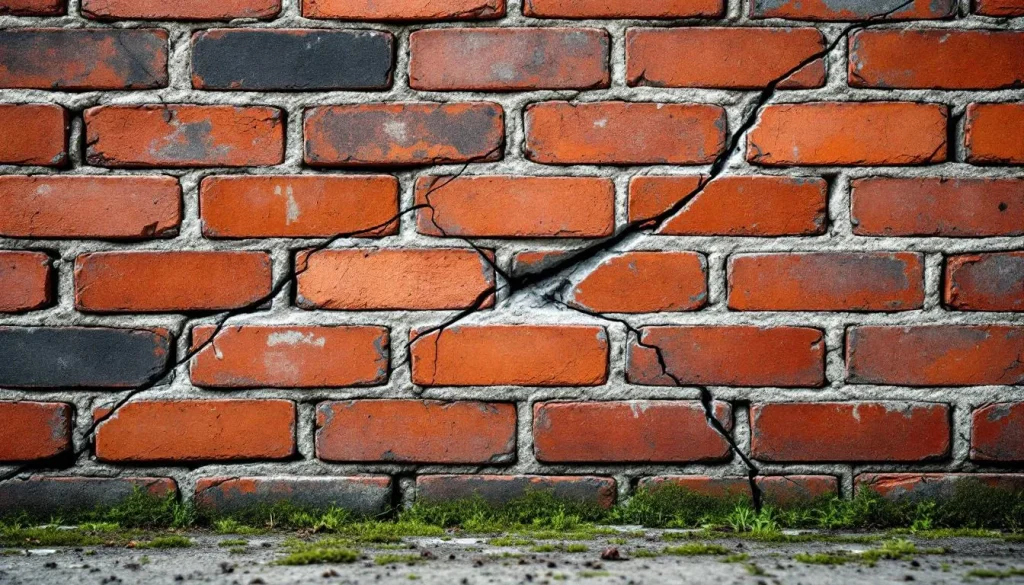Is that crack in your wall just normal house settling, or a sign of something more serious? It’s a question that keeps many Tyler homeowners up at night.
While older homes naturally develop minor cosmetic issues over time, knowing the difference between harmless settling and dangerous foundation problems can save you thousands in repairs.
Your home will likely experience some normal settling but hairline vertical cracks and slightly sticky doors aren’t usually cause for alarm.
However, when cracks grow wider than 1/8 inch annually, doors become completely inoperable, or walls begin leaning inward, you’re facing legitimate foundation issues that shouldn’t be ignored.
Environmental factors like water pooling near your foundation or nearby tree roots can transform minor settling into major structural concerns.
Old House Noises: Is it Just Settling or Something Worse?
Those strange creaks and pops from your older Tyler home might keep you up at night, wondering if they’re harmless or signs of serious foundation problems.
Understanding what’s normal and what’s not can save you unnecessary worry – or help you catch issues before they become expensive repairs.
When to Worry (And When Not To)
Many noises and small changes in older homes are just part of their character. Foundation settling happens naturally as soil conditions change, but true foundation problems require professional attention.
The key is knowing the difference between normal settling signs and red flags that indicate structural issues.
Normal settling signs that aren’t a big deal
Occasional creaking or popping sounds, especially during temperature changes, are perfectly normal in older homes.
Hairline vertical cracks in drywall or plaster that don’t grow wider over time typically indicate normal settling.
Slightly sticky doors or windows that don’t worsen seasonally are also common as houses age and settle into their foundations.
Red flags that scream ‘call a pro now’
When foundation problems become serious, they announce themselves clearly.
‘Horizontal or stair-step cracks in your walls, especially if wider than 1/8 inch, signal foundation issues that need immediate attention.
Doors that won’t close at all or windows that are completely jammed indicate your home’s structure is shifting significantly.
Sloping or uneven floors, bulging walls, or cracks in your foundation slab are serious signs that soil shifting underneath your home requires foundation repair.
The settling timeline: what’s normal for older homes
Older homes in Tyler have usually completed most of their settling process. Houses typically experience the most dramatic settling during their first 5-10 years.
After 20+ years, any sudden new settling is typically caused by external factors like erosion, plumbing leaks, or dramatic soil changes – not normal aging.
If your decades-old home suddenly develops new cracks or starts making strange noises, it’s worth having a foundation inspection to identify potential issues before they worsen.

Cracking the Code
Let’s decode what your foundation is telling you through its visible signs and symptoms. Understanding these indicators helps you distinguish between normal settling and serious foundation problems.
What crack patterns tell you about your foundation
Horizontal cracks or stair-step patterns in your brickwork aren’t just cosmetic issues – they’re warning signs of foundation movement.
Cracks wider than ¼ inch require immediate attention, especially if they’re expanding over time or allowing moisture inside.
Stair-step cracks in masonry specifically indicate lateral foundation movement, pointing to potential soil shifting beneath your home.
Environmental clues around your property
Your yard offers revealing hints about foundation health. Water pooling near your foundation or leaking into your basement creates unstable soil conditions that worsen foundation issues.
Tree roots within 10–20 feet of your home can cause problems by draining soil moisture unevenly, creating pressure points that stress your foundation. These environmental factors often trigger the need for foundation repair.
Structural symptoms that shouldn’t be ignored
Bowing walls and uneven floors that sag underfoot are clear indicators of foundation problems requiring professional inspection.
Doors and windows that no longer latch properly or show worsening alignment point to structural shifting.
If walls lean inward by 1 inch or more over 8 feet, or if persistent moisture issues coincide with other symptoms, you’re facing serious foundation issues that need professional foundation repair contractors.
Saving Your Foundation (And Your Wallet)
Taking action early saves you thousands in foundation repair costs. Simple prevention tactics cost far less than major foundation work and protect your home’s value.
Water management tactics that actually work
French drains redirect rainwater away from your foundation effectively. Install proper grading with a 6-inch drop per 10 feet to prevent water pooling near your home.
These systems create a protective barrier that diverts moisture before it can damage your foundation or cause soil shifting.
Proper drainage significantly reduces the risk of erosion around your foundation’s perimeter.
Smart soil and landscaping practices
Maintain consistent soil moisture with soaker hoses during drought periods to prevent foundation-damaging shrinkage.
Plant trees at least 20 feet away from your foundation to avoid root intrusion. For larger species, install root barriers to protect your foundation from pressure.
These practices minimize soil expansion and contraction cycles that lead to foundation problems.
DIY maintenance that prevents bigger problems
Regular foundation inspections help catch minor issues before they require expensive repair.
Check for small cracks quarterly and monitor their size. Fill hairline cracks with appropriate sealants to prevent water infiltration.
Clean gutters seasonally to ensure proper water flow away from your foundation.
These simple tasks prevent the soil shifting that often necessitates slab repair.
Reinforcement options when things get serious
Steel piers provide permanent support for homes with significant foundation issues. Carbon fiber straps stabilize bowing walls without extensive excavation.
Slabjacking can lift and level concrete slabs that have settled unevenly. Consider polyurethane injection to fill voids beneath your foundation.
A professional foundation inspection helps determine which reinforcement method best addresses your specific foundation problems.

Time to Call in the Cavalry
When foundation problems cross from annoying to alarming, it’s time to bring in professional help. Knowing exactly when to make that call can save you thousands in preventable damage.
Clear thresholds for professional intervention
Call a foundation repair contractor immediately if cracks grow ⅛ inch or more in a year or if doors and windows suddenly stop working properly.
When walls lean inward by 1 inch or more over 8 feet, you’re facing serious structural issues.
Persistent moisture problems combined with foundation symptoms like musty odors or mold growth in your basement aren’t just coincidence; they’re warning signs demanding expert attention.
What to expect during a foundation inspection
During a foundation inspection, professionals evaluate both the interior and exterior of your home for signs of settling or damage. They’ll measure floor slopes, examine cracks, and check door frame alignment.
The inspector will look for water issues around your foundation and assess soil conditions for erosion or shifting.
After completing the evaluation, they’ll provide a detailed report with repair recommendations and cost estimates for any necessary foundation repair.
Questions to ask before hiring foundation experts
Before hiring foundation repair experts, ask about their experience with similar problems in Tyler’s specific soil conditions.
Request proof of licensing, insurance, and references from local projects. Inquire about their warranty terms.
Ask for a detailed explanation of their diagnosis, including what’s causing your foundation issues and why their proposed solution addresses the root problems like plumbing leaks or soil shifting.
